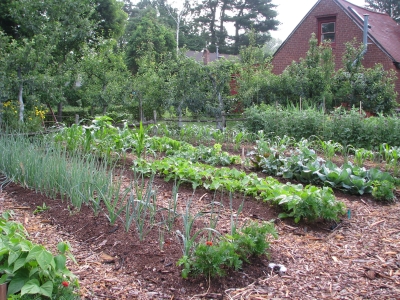WEED-LESSNESS FOR 2021
/0 Comments/in Gardening/by Lee ReichWEEDLESS GARDENING WORKSHOP/WEBINAR
with Lee Reich, PhD, writer, scientist, and farmdener*
Introducing a novel way of caring for the soil, a 4-part system that minimizes weed problems and maintains healthy plants and soil. Learn how to apply this system to establish new plantings as well as to maintain existing plantings. The principles and practices are rooted in the latest agricultural research and are also applicable to sustainable, small farm systems.
This system works because it emulates, rather than fights, Mother Nature who, as C. D. Warner wrote (My Summer in the Garden, 1887), “is at it early and late, and all night; never tiring, nor showing the least sign of exhaustion.”
Date: February 22, 2021
Time: 7-8:30 pm EST
Cost: $35
Register for this webinar at:
https://us02web.zoom.us/webinar/register/WN_WqSCBtOGTqqjGgbOHOuxfg
After registering, you will receive a confirmation email containing information about joining the webinar.
*A farmdener is more than a gardener and less than a farmer.
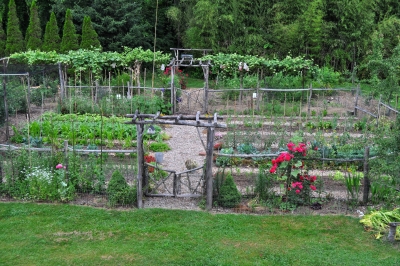
THANKS
/11 Comments/in Fruit, Gardening/by Lee ReichI’d like to highlight, today, what makes this blog possible.
First of all, it’s you, readers. The positive feedback I get is very rewarding. I’ve had great opportunities — academically and “in the field” — to learn about growing plants and caring for the soil, and have put all this into practice for decades. My hope is that in entertaining you with all this, your tomatoes, apples, zinnias, and all the rest grow healthier and tastier or prettier. I appreciate the positive (even the sometimes negative) comments from you all.
Second, if you’ll look at the bottom right corner of my blog posts (or scroll way down near the end on a mobile device), you’ll see some banner ads. Nothing flashy or moving or obnoxious in any other way. Just simple links to a few advertisers.
These seven advertisers are special; these are companies whose products I stand behind. I’ve used them and can attest to their quality.
Fruit Plants Galore
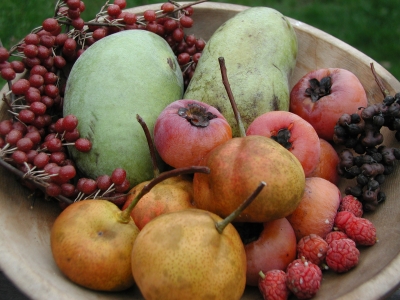
Uncommon Fruits of Fall
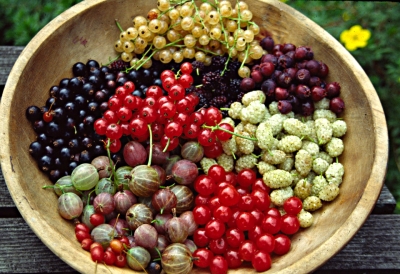
Uncommon fruits of summer
Take, for instance, Raintree Nursery and Cummins Nursery. I’m a “fruit nut” (and a “nut nut”) and, except when I propagate my own plants, these two nurseries are my go-to nurseries for fruiting trees and shrubs.
Raintree Nursery stands out for the wide variety of common and uncommon fruits they offer, everything from apples to jujubes to musk strawberries to wintergreen to hardy passionfruits. All top quality plants.
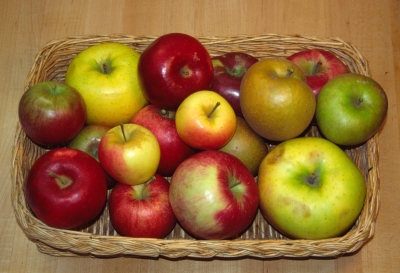
Heirloom apples
Cummins Nursery also offers top quality plants, trees in this case. Steve Cummins, the present owner, started the nursery with his dad, Jim, and other family members. Back in the 20th century, when I worked in research for Cornell University, Dr. Jim Cummins also worked there. For many years, he was the rootstock breeder. (A rootstock, on which a Honeycrisp, Mutsu, or other variety of fruit is grafted in order to propagate it, can impart special qualities to the resultant tree, such as early production, eventual tree size, pest resistance, and tolerance to poor soil conditions.)
So I turn to Cummins Nursery if I’m interested in a common (vs. uncommon) fruit tree on a special rootstock, with many, many varieties of fruit to pick from. Or if I want to purchase a rootstock to graft myself. Or if I want a scion of any one of the many, many different varieties of fruits grown at Indian Creek Farm, the pick-your-own farm they run adjacent to the nursery.
You’ll note that Raintree Nursery is in Washington state and Cummins Nursery is in New York state. No matter. These nurseries are selling named varieties of fruit plants. A McIntosh apple grown in Washington state is genetically identical to that variety grown in New York state, so will have the same cold-hardiness, pest resistance, and other characteristics. Of course, a particular season’s weather, wherever the tree is planted, could influence flavor and texture.
Essential, Quality Tools
If you grow fruit plants — or vegetables or ornamentals or houseplants — you’re going to need certain tools. Glance down, then, to my next three advertisers: OESCO (“Oesco” is the acronym for “orchard equipment supply company)”, ARS (the exclusive agent for ARS pruning tools), and Scythe Supply Co.
Whether it’s pole pruners, pruning saws, or most other pruning tools, ARS are among my favorites, and especially for hand shears. The ARS website shows the complete line of ARS tools, as well as where you can purchase them.
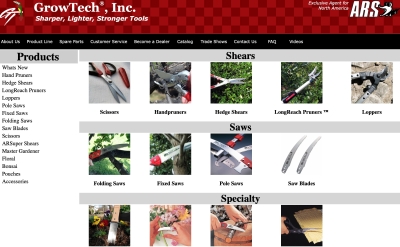
One place for many of those pruning tools, ARS or otherwise, is OESCO. And much more. Trowels, all sorts of shovels, hedgers, sharpeners, grafting knives and sealants, stuff for making trellises, and, of course, many kinds of hand pruning shears.
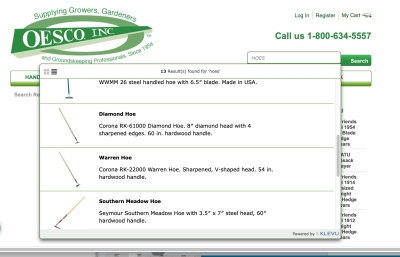
Scythe Supply Co is where I purchase all my scythe blades, sharpening stones, peening tools, and, originally, my snath and grips (I’ve since made these last two parts myself, when needed). You might think a scythe to be an archaic tools. Not so; it works even early mornings without waking the neighbors and in ground too wet or grass too high for a mower. Swinging a scythe is a meditative, first-class exercise.
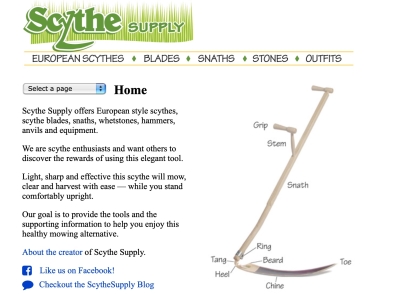
My property was originally a mere 3/4 of an acre. Besides my home, vegetable garden, and fruit trees, I was able to dedicate a portion of that property to a mini-hay field, where I let the grass grow high and then periodically scythed it as food for my compost pile. It was decorative and functional. (Okay I did encroach on the actual hayfield bordering my 3/4 of an acre; I eventually bought it and now have a bona fide hayfield, portions of which I scythe.)
Two More Essentials
You might wonder, “What’s with Bobbex and Sensorpush?”, the last two ads on these blog pages?”

In the past couple of winters as Daisy and, especially Sammy, matured beyond their super energetic puppy stages,
deer have taken note and become bolder. My initial testing of Bobbex, a deer repellent, seemed promising. I’ve since become amazed at its effectiveness. Deer are here, but not feeding on any of my sprayed plants. And spraying is only needed once a month.
I’ve waxed enthusiastic about Sensorpush many times here on this blog. Basically, it’s a one inch square by 1/2 inch device that you place wherever you want to know the current and historical temperature, relative humidity, barometric pressure, dewpoint, and vapor pressure deficit. There’s one in my greenhouse, and it can alert me if the temperature goes above or below whatever temperature specified.  The one on my garden gate is especially useful in spring and fall, when frosts threaten. As soon as the snow melts, my third Sensorpush will go beneath the pile of leaves protecting a fig tree I planted outdoors to monitor winter temperatures there. (Much more about this at a later date.)
The one on my garden gate is especially useful in spring and fall, when frosts threaten. As soon as the snow melts, my third Sensorpush will go beneath the pile of leaves protecting a fig tree I planted outdoors to monitor winter temperatures there. (Much more about this at a later date.)
So there you have it: seven companies whose products, in my opinion, make for better gardening or farming.
Get Ready for Spring
Are you interested in having a weedless garden this season? Learn how, at my upcoming WEEDLESS GARDENING webinar. The system I’ll talk about also makes more efficient use of water, conserves valuable soil organic matter, allows earlier planting in spring, and doesn’t disrupt beneficial fungi and other friendly soil organisms. Starting a new garden? Here’s the fastest way to get the soil prepared and plants growing.
I’ll cover all this, and more, in the webinar, and allow plenty of time for questions. The webinar costs $35 and runs from 7-8:30 pm on Monday, February 22, 2021.
Space is limited so registration is necess ary.Register at https://us02web.zoom.us/webinar/register/WN_WqSCBtOGTqqjGgbOHOuxfg.
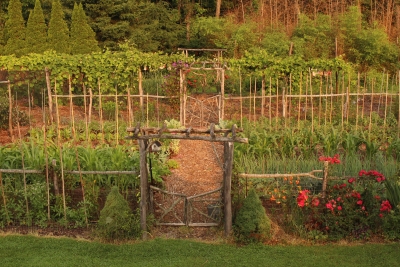
TELLING SNOW
/20 Comments/in Gardening, Pests, Pruning/by Lee ReichI Grow Taller
“Make hay while the sun shines” is fine advice in its season. For winter, how about? “Prune while the snow is high and firm.”
My apple and pear trees are semi-dwarf, presently ranging from seven to eleven feet tall. Even though I have a pole pruner and various long-reach pruning tools, I still carry my three-legged orchard ladder out to the trees with me to work on their upper branches. Sometimes you have to get your eyes and arms and hands right up near where you’re actually cutting.
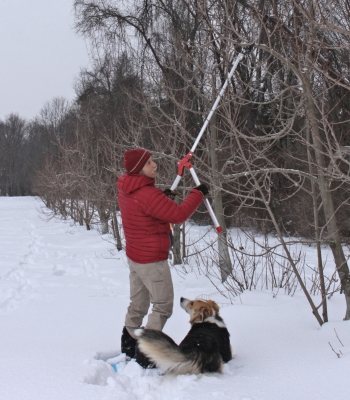
A few years ago, as I was looking out the window and admiring the foot or of snow on the ground, I realized that all that snow could give me a literal leg up on pruning. If I stayed on top of the snow, that is. While the snow was still soft, I was able to do this by strapping on a pair of snowshoes, which I bought, used, just for this purpose. (For travel through snow, I prefer to glide, on skis.) When the snow melted a little and then froze, the icy crust that formed was able to support my weight sans snowshoes.
In any case, when there’s a good depth on the ground, such as today, I gather my tools – minus the stepladder – and walk tall out to the trees.
Top Down Pruning
Plants, like other creatures, have hormones, and a hormone (called auxin) in every plant generally coaxes uppermost portions to grow most vigorously. Which is why old apple trees become topheavy, with most shoot growth high up. The upshot of this habit is that most fruit is borne high in the branches, out of reach, and lower branches are shaded to become unproductive and prone to disease.
Ideally, then, the best place to start pruning is with the most vigorous branches, highest in the tree. That’s also the last place you want to start if you’re standing at ground level. Perched atop a good depth of snow next to my smaller trees, starting near the top was much easier.
If I get high enough (in the tree), I can imagine that I’m hovering above the branches, looking at them from the perspective of ol’ Sol, which is a good perspective for a grower of fruit trees. This allows a more objective perspective on which branches are going to be blocking light or otherwise cramping others for space.

Letting more light and air in among the branches and, at the same time removing potential fruits with pruned branches, channels more of each tree’s energy into perfecting those fruits that remain. Remaining fruits are then healthier, larger, and more flavorful, especially for naturally larger fruits such as apples, pears, and peaches
Snow Tales
The snow is a blank canvas that records some winter activities. My dogs’ footprints are obvious and telling. They are provincial in their travels, having beaten paths from their doghouses, where they sleep, to the driveway, where they greet humanity, and to the deck, where they lie in the sun.
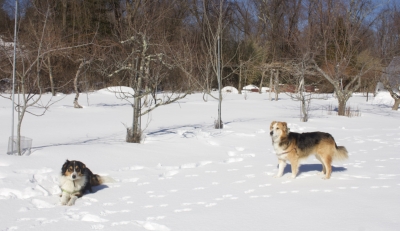
Daisy and Sammy at work
Less frequent are their forays out into the hay field to do their business and to see if anything interesting is creeping around out there.
The small, padded footprints of my cat hasn’t beaten out paths. The cat more randomly explores out-of-the-way nooks and crannies. She also likes to steer clear of the dogs, who consider her just another small animal worth chasing.
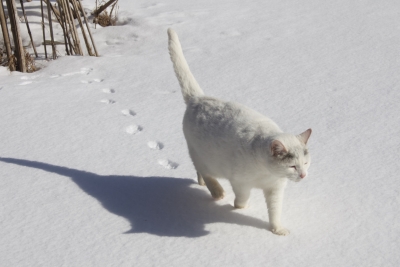
Gracie at work
The distinctive footprints that I’m keeping the closest eye out for are those of rabbits and deer. Now, about when I typically delude myself that all danger has past, periods of warmer weather start coaxing rabbits to wander about and eye my trees and shrubs as food. Now is also when cottontail rabbits start reproducing, the first of up to five litters for this year, with a half dozen or so bunnies per litter! Very cute, but deadly to my plants.
This winter, a couple of deep snows either brought deer here or displayed their abundance with tracks in the snow. For the rabbits, who feed on young trees and low branches, I sometimes make up a spray of white latex paint, water, eggs, cinnamon, and hot pepper. That needs to be re-applied about now. Traps I set out for them are thoroughly and safely (for the rabbits) buried in snow. Perhaps I’ll dig them out and re-set them.
The uncluttered expanse of snow makes it easy to see where I put my pruning tools as I prune the apples and pears. The snow also makes it easy to see where I drop the prunings.
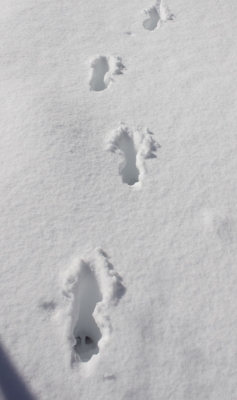
Deer tracks in the snow
And why do I care where I drop my prunings? Because I can then quickly look at them to see if any bark has been gnawed off those freshly cut branches. And what would gnaw bark off those freshly cut branches. Rabbits!
No sign of rabbits – yet, at least – on those prunings as well as on tracks in the snow. Thank you Gracie (my cat).
The dogs’ are supposed to be keeping deer at bay, but do so only if they are out and about when deer are around. This year I’ve been relying on Bobbex repellent, which I spray monthly on branches that would be within reach of the deer. So far, the sprays have been 100% effective even on trees with deer tracks right beside them in the snow.
Get Ready for Spring
I will be hosting a WEEDLESS GARDENING webinar on Monday, February 22nd for $35. It will run from 7-8:30 pm EST and there will be plenty of opportunity to ask questions. For details, go to www.leereich.com/workshops. Or trust me, and go right to registration (required) at https://us02web.zoom.us/webinar/register/WN_WqSCBtOGTqqjGgbOHOuxfg
